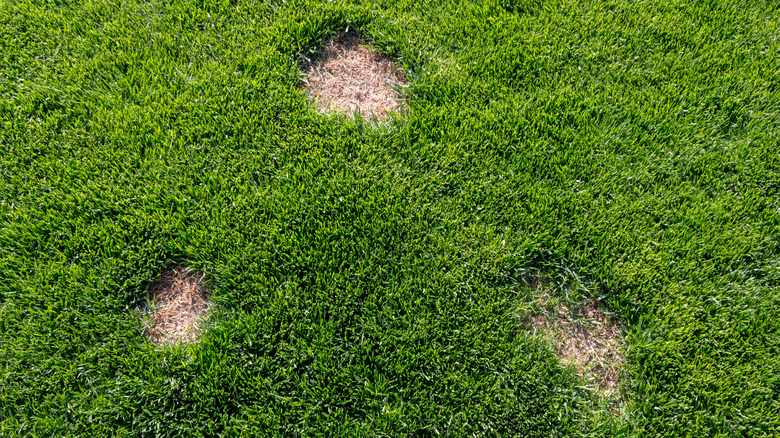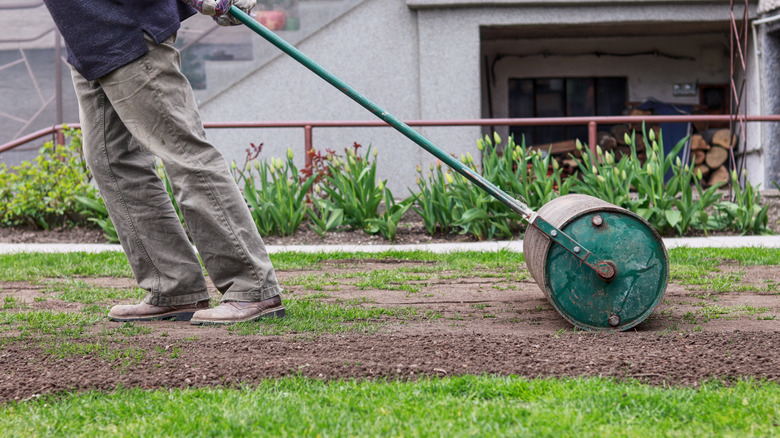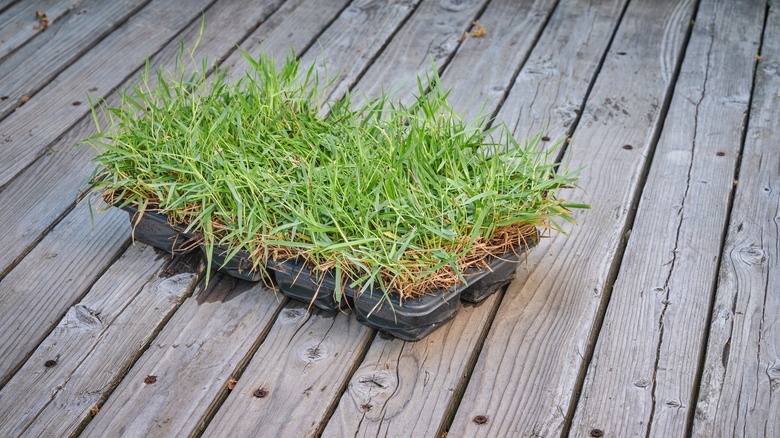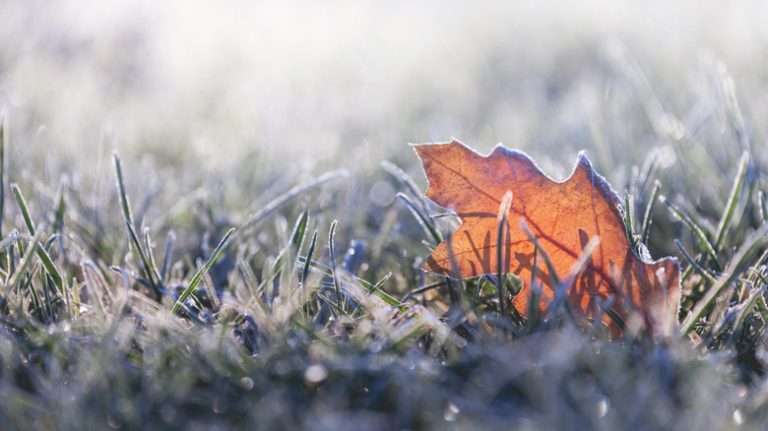Sprigging and plugging your lawn could be one of the best ways to help it fill out during the warmer months when seeding isn’t ideal and sod isn’t an option. Sprigging, sometimes called stolonizing, is a process in which grass stems with linked roots and grass blades are attached to each other. A plug, by comparison, is a small cut portion of sod that’s placed into an open area. Sod tends to include numerous blades of grass with a small base layer of soil, allowing for the placement into an open area.
The most common reason for using either method is to help establish grass in an area where it’s not growing. If the kids left toys out in the yard for too long, the space under them could have become damaged and bare. Other times, you may be removing a landscape bed and want to fill in that open space with a new lawn. These methods work well to help establish grass in those areas, especially when it’s the warmer part of the year. Though it’s always best to try to grow grass during the spring months due to higher moisture and less intense sunlight, plugging and sprigging can be done anytime with a bit of care.
Typically, garden centers and specialized growers offer sprigs or plugs in bundles, allowing for the repair of lawns throughout the year. Keep in mind that you’ll want to consider the lawn species type and your local environment before choosing these.
How and went to use plugs

Most often, warm-season grasses can be purchased in either form, and the one you select depends on what you’re looking for in the finished lawn. For example, if you have a few bare patches of dirt that you want to fill in, using plugs tends to be better. It’s much like a cut-and-paste process of positioning them to fill in the blanks. With plugs, the results are typically immediate, though you’ll need to provide them with care over time to ensure the grass is established.
Plugs are usually a couple of inches across and tend to be sold in a flat of 12 to 18, though your local garden shop may be a bit different. When choosing this method, find out how many square feet of space the product will cover and choose accordingly. You’ll need to place them between 6 and 12 inches from each other, and the area in between will fill out over time.
Prior to establishing them, tend to the existing soil, ensuring all dead matter or chemical damage present is removed, and the nutrient level is good for the grass species you are installing. Then, loosen the dirt to allow for an easy transplant. Moisten the soil, dig holes about every 6 to 12 inches, and plant the plugs as you would flowers. Press the plug into the ground or use a lawn roller when doing a larger area. Keep it moist for the next two weeks.
How and when to use lawn sprigs

Sprigs are a bit different and tend to be better for establishing larger areas of grass. They look like long strings with blades of grass attached to them. The stem will have both the above-ground and below-ground components of the grass, and you’ll usually be able to purchase them by the bushel. The amount of square footage coverage can differ between suppliers.
You’ll need to prepare the soil well for the best results with sprigs. That includes typically loosening the dirt throughout the area. Then, place the sprigs randomly throughout the area. If you cover the area lightly with soil after setting them on the loose soil, there’s no need to dig holes for them. You can dig rows to plant them as well. If you choose this route, plant each row about 6 to 12 inches from each other and create a trough about 2 inches deep. Then, lightly pack the soil into place. The key to success with sprigs is to ensure the nodules are touching the loose soil. Then, fill in the trough lightly with soil.
Once in place, lightly roll over the surface with a lawn roller or tap with the back end of a hoe. This helps to encourage them to remain in position. Finally, wet the area well to saturate and keep it moist for the next few weeks as the grass grows and your lawn becomes beautiful.




